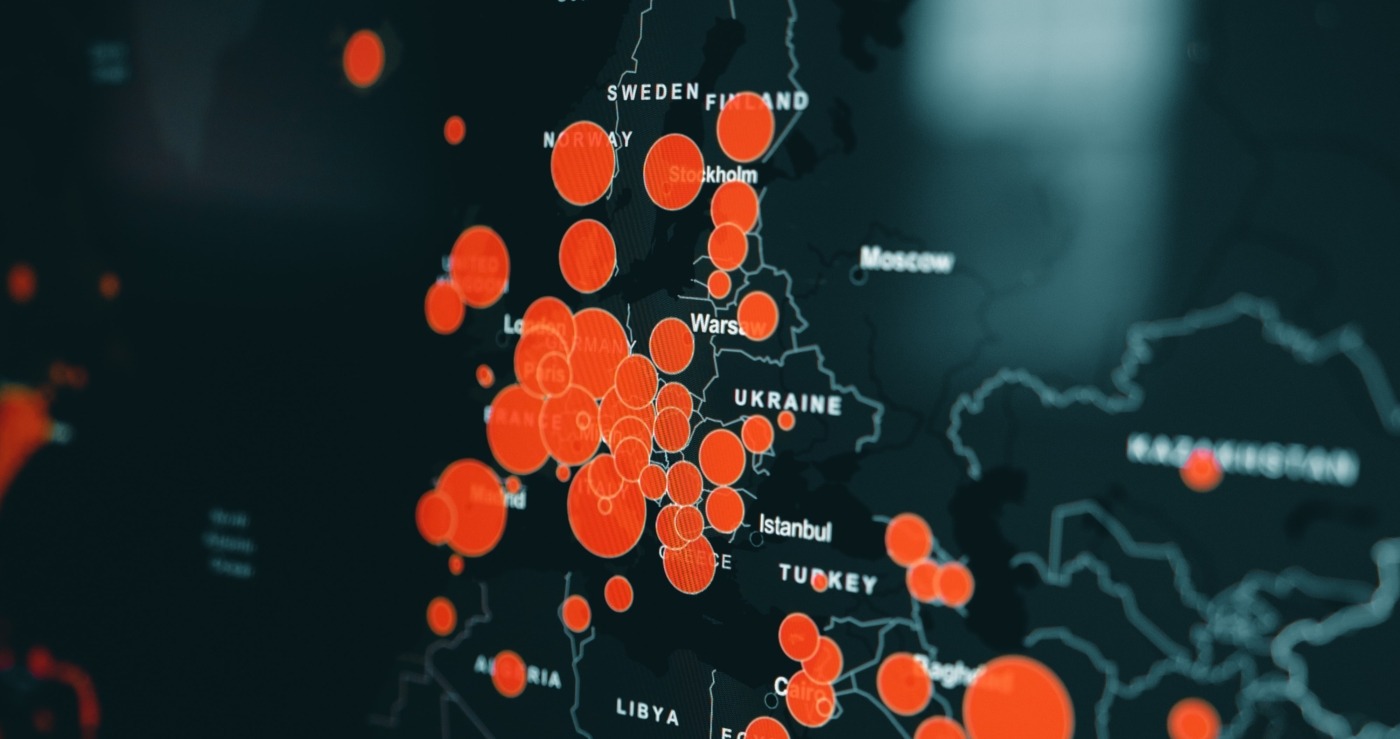Coronavirus: COVID-19 under the microscope
Ever since it was first reported in late December, COVID-19 has dominated headlines and affected the way we learn, work and live. But what is it? And how bad is it actually?
Where did COVID-19 come from?
COVID-19 is the name for the disease caused by the virus SARS-CoV-2. This virus is part of the coronavirus family which includes the viruses responsible for a range of diseases, including the common cold. SARS-CoV-2 is further classified as a member of the betacoronavirus genus, being more closely related to the viruses responsible for Middle Eastern Respiratory Syndrome (MERS) and Severe Acute Respiratory Syndrome (SARS).
Coronaviruses are zoonotic, transmitted between animals, it’s rare that they are transmitted to humans. Genetic testing suggests the current pandemic is a result of one transmission from animal to human. It is suspected that the betacoronaviruses originated in bats due to the identification of similar viruses in some bat species. This could have implications for the effectiveness of the human immune system. For example, one important human defence mechanism against pathogens is a fever – a rise in body temperature. During flight, the body temperature of bats increases. Pathogens harmful to bats are therefore used to these warmer conditions and so are more resistant against fevers.
Genetic testing suggests the current pandemic is a result of one transmission from animal to human
While the virus may originate in bats, it may also be transferred to other animal species. The close proximity of animals in the Wuhan vet-markets is the believed epicentre of the outbreak, provided an easy opportunity for spread. This is worsened if an animal has a weakened immune system. Stress, potentially as a result of human activities such as hunting and trapping as well as deforestation and habitat loss has been shown to weaken immune systems resulting in more opportunity for the spread of COVID-19. Other human factors, such as increased transport, travel and more densely packed populations are also implicated.
How does this compare to flu?
Many people have dismissed COVID-19 as similar to seasonal influenza, flu, however data suggests that it’s much worse. The reproduction number, R0, is how many people, on average, catch the virus from one infected person. For flu it’s 1.3, while it is predicted to be between 2-2.5 in COVID-19, highlighting a rapid and exponential spread. This spread is worsened by COVID-19’s long incubation time, sufferers can have the virus for 1-14 days before feeling any symptoms, compared to a period of 1-4 days in flu. COVID-19 also has the potential to put a greater burden on healthcare systems with a 19% hospitalisation rate, a stark contrast to the 2% rate for flu. This high hospitalisation rate can impact sufferers of other diseases and injuries, as beds, equipment and staff are no longer available. There is also a concerning difference in CFR, the case fatality rate. For flu it’s 0.1%, for COVID-19 it’s 3.4%.
The danger of COVID-19 comes from the combination of its harmfulness and its spread
It’s important to note that these figures are flexible, reliant on a range of factors and open to controversy. The CFR of COVID-19 is particularly disputed. A shortage of tests means that only those with severe symptoms are tested. Those with milder symptoms may not be diagnosed and included in these estimates. The CFR of COVID-19 is speculated to fall between 1% and 3.4%, still far higher than that of flu. Comparisons to SARS and MERS, are more reassuring, as these CFRs are 14-15% and 34.4% respectively. However these diseases spread much slower than COVID-19. Therefore the danger of COVID-19 comes from the combination of its harmfulness and its spread.
There is one other factor that must be taken into account when considering COVID-19: it’s an unknown. As a novel virus, all figures are obtained from the current pandemic, with potential for inaccuracies, bias and complexities. It’s also an unknown to the body, which has no natural immunity and can lead to complications such as pneumonia and to medicine, with no specific treatments or vaccines. Viruses mutate rapidly and minor differences have already been identified between cases. Fortunately, it seems unlikely that these mutations could lead to the evolution of a more deadly virus, although they could make developing a vaccine more difficult. COVID-19 may phase out during the hotter temperatures of the summer months, only to return in Autumn. There are also concerns that its burden on healthcare will not only increase the death toll but cause long-term issues.
Small actions such as physical distancing and handwashing will help to reduce the spread of the disease, helping not only those who are vulnerable but also reducing the burden of the disease on healthcare systems and society as a whole. Conversely, selfishness and greed will make its effects worse. We must take COVID-19 seriously, but we all must take responsibility to overcome this latest threat.

Comments